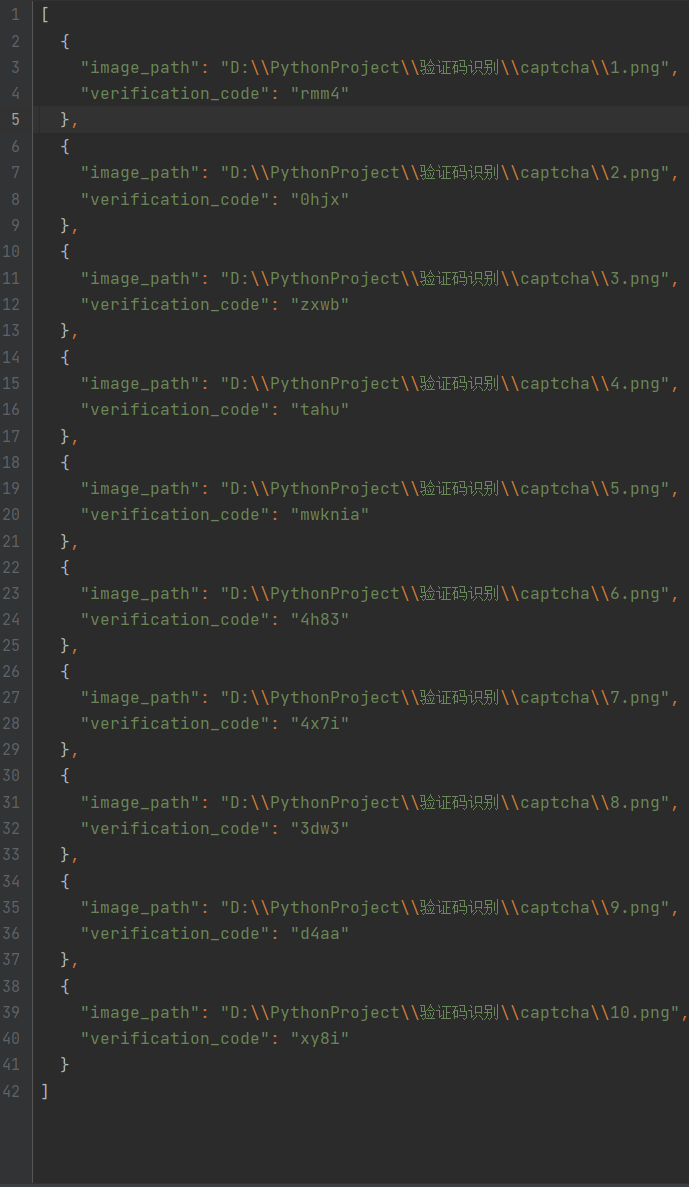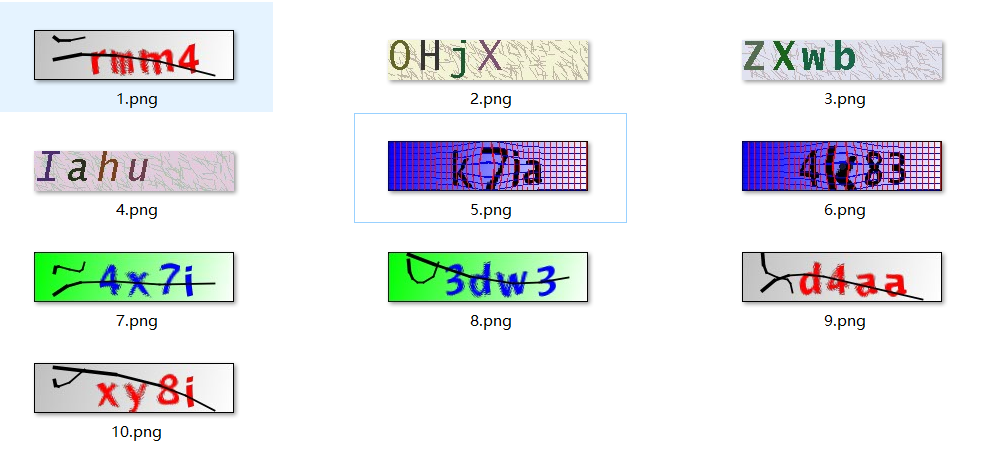一.识别文件
import os
from ctypes import cdll, string_at, create_string_buffer
os.environ["GLOG_minloglevel"] = "3"
# 0-调试
# 1-信息(仍然有很多输出)
# 2-警告
# 3-错误
class ocr:
def __init__(self, image_absoult_path: str = None, folder_path: str = None, image_type: str = None):
self.__image_absoult_path = image_absoult_path # 图片绝对路径
self.__folder_path = folder_path # 文件夹路径
self.__image_type = image_type # 图片类型
self.__current_path = os.path.abspath(os.path.split(__file__)[0])
def __normal_ocr(self, imagePath: str) -> str: # 普通精度
self.__set_dll(dll=r"\ocr\ocr.dll")
# 初始化识别库
self.__dll.init()
with open(file=imagePath, mode="rb") as f:
# 读入图片
image = f.read()
# 利用dll中的ocr函数进行识别
image_str = self.__dll.ocr(image, len(image))
# 返回的是指针,所以此处将指针转换为字符串,然后再编码即可得到字符串类型
verification_code = string_at(image_str).decode("utf-8")
return verification_code
def __high_ocr(self, imagePath: str): # 高精度
self.__set_dll(dll=r"\ocr\OCRS.dll")
# 载入字库与建立字库索引
with open(file=self.__current_path + r"\ocr\通杀英文数字库.cnn", mode="rb") as f:
# 载入字库
word_bank = f.read()
# 建立字库索引
work_index = self.__dll.INIT(self.__current_path, word_bank, len(word_bank), -1, 1)
with open(file=imagePath, mode="rb") as f:
# 读入图片
image = f.read()
image_str = create_string_buffer(100) # 创建文本缓冲区
self.__dll.OCR(work_index, image, len(image), image_str) # 利用DLL中的识别函数进行识别
verification_code = image_str.raw.decode("utf-8").strip().strip(b'\x00'.decode()) # 对识别的返回值进行编码
return verification_code
def __check_is_file(self): # 检查本地图片
if self.__image_absoult_path is None:
raise Exception("请传入本地图片地址")
if not os.path.isfile(self.__image_absoult_path):
raise Exception("请传入本地图片的绝对地址")
def __set_dll(self, dll: str = None): # 初始化dll
self.__dll = cdll.LoadLibrary(self.__current_path + dll)
def __get_list_image_path(self) -> list: # 获取文件夹目录下的图片
pathList = []
for root, dirs, files in os.walk(self.__folder_path):
for file in files:
if file.endswith(self.__image_type):
pathList.append(os.path.join(root, file))
return pathList # 输出以filetype为后缀的列表
def ocr_single_file(self, model: bool = False) -> str: # 单个图片识别
# model True启动高精度,否则普通精度
self.__check_is_file()
if model is False:
return self.__normal_ocr(imagePath=self.__image_absoult_path)
else:
return self.__high_ocr(imagePath=self.__image_absoult_path)
def ocr_multiple_files(self, model: bool = False) -> dict: # 多个图片识别
# model True启动高精度,否则普通精度
image_list = self.__get_list_image_path()
if not image_list: return None
image_list.sort(key=lambda x: int(x.split('.')[0].split("\\")[-1]))
verification_code_list = []
for image_absolute_path in image_list:
verification_code_dict = {"image_path": None, "verification_code": None}
verification_code_dict["image_path"] = image_absolute_path
if model is False:
verification_code_dict["verification_code"] = self.__normal_ocr(imagePath=image_absolute_path)
else:
verification_code_dict["verification_code"] = self.__high_ocr(imagePath=image_absolute_path)
verification_code_list.append(verification_code_dict)
return verification_code_list
二.验证码图片

三.调用
1.单文件调用
| 参数 |
解释 |
| image_absoult_path |
单个验证码图片的绝对路径 |
| model |
True/False True是高精度,默认为False普通精度 |
image_path = os.path.abspath(os.path.split(__file__)[0])+r"\captcha\1.png"
a = ocr(image_absoult_path=image_path)
print(a.ocr_single_file(model=True))
2.文件夹调用
| 参数 |
解释 |
| folder_path |
文件夹的绝对路径 |
| image_type |
文件夹下的图片的类型 |
| model |
True/False True是高精度,默认为False普通精度 |
folder_path = os.path.abspath(os.path.split(__file__)[0]) + r"\captcha"
b = ocr(folder_path=folder_path, image_type="png")
print(b.ocr_multiple_files(model=False))
3.文件夹调用(需要指定文件下的图片类型)
| 参数 |
解释 |
| folder_path |
文件夹的绝对路径 |
| image_type |
文件夹下的图片的类型 |
| model |
True/False True是高精度,默认为False普通精度 |
folder_path_ = os.path.abspath(os.path.split(__file__)[0]) + r"\captcha"
c = ocr(folder_path=folder_path_, image_type="png")
print(c.ocr_multiple_files(model=True))
四.识别结果
| 类型 |
模式 |
文件名称 |
识别结果 |
成功率 |
| 单验证码识别 |
高精度 |
1.png |
 |
100% |
| 多验证码识别 |
普通精度 |
1.png~10.png |
 |
60% |
| 多验证码识别 |
高精度 |
1.png~10.png |
 |
80% |
五.结尾
感谢网友提供dll
| 网盘 |
文件简介 |
链接 |
密码 |
| 天翼云 |
必须的dll |
189.cn |
fp0n |
| 天翼云 |
需要识别的验证码图片 |
189.cn |
9rhm |









